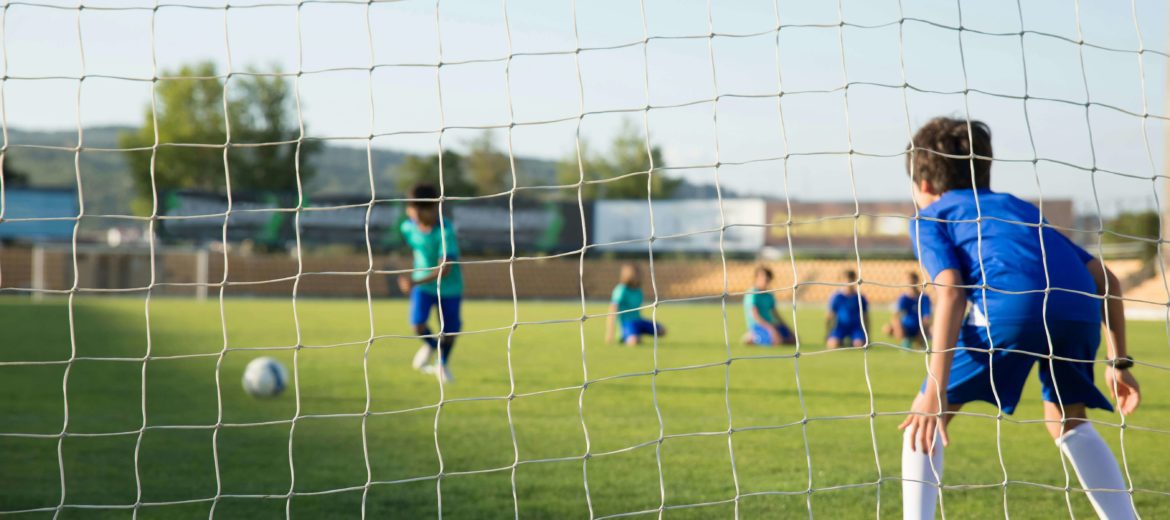When summer winds down and the school year begins, many kids and teens are excited for the thrill of fall sports. Sports are a great way for people of any age to get exercise, develop discipline, practice teamwork, and gain many other benefits – but sports also come with an inevitable risk of injury.
While injuries can be random and simply due to bad luck, oftentimes they are preventable. Being aware of the types of injuries that can occur and how they can be prevented can make this fall sports season less painful and more productive.
Understanding Common Youth Sports Injuries
Kids and teens can experience many of the same types of sports injuries adults experience, but there are some different risk factors. Growing bodies and open growth plates can make kids more vulnerable in some ways. They also tend to be very resilient and quick to heal in many cases.
Surprisingly, one of the most common problems kids and teens experience is back pain. This is often attributed to heavy backpacks, obesity, or growth spurts, but sports can also be a cause. In fact, a 2020 study found that about a third of kids and teens experienced back pain in the previous year1.
Back pain in kids and teens is usually muscular pain caused by overuse and often doesn’t require medical attention. In some cases, back pain caused by muscle strains and ligament strains can become a long-term source of discomfort if not treated properly. If back pain persists for more than a few days or gets worse, you may want to seek medical attention. When in doubt, it’s always best to get it checked out.
Sports can also be a cause of sprains and strains in joints, as well as serious injuries like bone fractures and ligament tears. Sports can also contribute to concussions, another serious concern. Some injuries can keep young athletes sidelined for entire seasons – if not longer.
There are many factors that contribute to youth sports injuries, including:
- Incomplete Development: Since children’s bones, muscles, and ligaments are still developing, they may be more susceptible to certain injuries.
- Repetitive Motions: Since many sports require repetitive motions, overuse injuries are relatively common.
- Improper Technique: Using bad form or technique can put excessive force on body parts, making them more susceptible to injury.
- Inadequate Warm-up and Stretching: Warm-up and stretching can help prepare your body for activity and reduce the risk of injury.
- Lack of Rest and Recovery: Insufficient rest and recovery between sessions and seasons can lead to overuse injuries.
Being aware of these factors that can help you avoid some of the common mistakes that often lead to injuries in youth athletes.
Prevention Strategies
Since we have a good idea of many of the risk factors associated with sports injuries, we also have some god strategies to help prevent injuries before they happen. Some simple, but effective, preventative actions include:
- Smart warm-ups & cool-downs. Preparing your body before you perform can increase the temperature and flexibility of your muscles2, making them less likely to be injured. Cooling down helps to gradually prepare your body for rest and recovery.
- Proper technique & body mechanics. Coaches and parents should monitor athletes’ form and technique, helping them to perform at their best and reduce the risk of injury.
- Equipment & load management. Ensure that all attire and equipment is appropriately sized, well-fitted, and in good condition. Make sure that athletes are not taking on more than they can handle at their strength, speed, and skill level.
- Nutrition, hydration, and rest. A healthy diet will ensure that your body has the nutrients it needs for growth and recovery. Staying hydrated can reduce cramps and fatigue, and rest is crucial – especially while your body is still growing.
Not all sports injuries can be prevented, but of the millions of sports injuries that occur each year, many could be avoided by employing these simple prevention strategies.
When Injuries Happen
Most sports come with an inherent risk of injury, and when we push ourselves to perform at our best, injuries are always possible. Luckily, most youth sports injuries are minor and can be treated with Rest, Ice, Compression, and Elevation (RICE), without the need for medical intervention. If symptoms persist after several days of home treatment – or get worse – it’s time to reach out to a medical professional like a physical therapist.
A physical therapist can evaluate your athlete’s condition and prescribe a personalized treatment plan to help them recover safely and efficiently. Physical therapy is also a great way to improve strength, flexibility, mobility and balance – so not only can they help you recover from injury and get back in the game, but they can also help you perform at your very best.
If you or a loved one knows an athlete (of any age) dealing with an injury, reach out to a physical therapist today. We can help evaluate the injury, create a safe and effective plan for recovery, and give you the knowledge and skills you need to perform at your best and prevent injuries in the future. Call us today at 906.932.4200 to schedule a free consultation.
Sources
- Fabricant, Peter D., et al. “The Epidemiology of Back Pain in American Children and Adolescents.” Spine, vol. 45, no. 16, 24 Feb. 2020, pp. 1135–1142, https://doi.org/10.1097/brs.0000000000003461. Accessed 31 Jan. 2023.
- American Heart Association. “Warm Up, Cool Down.” American Heart Association, 16 Jan. 2024, www.heart.org/en/healthy-living/fitness/fitness-basics/warm-up-cool-down.





